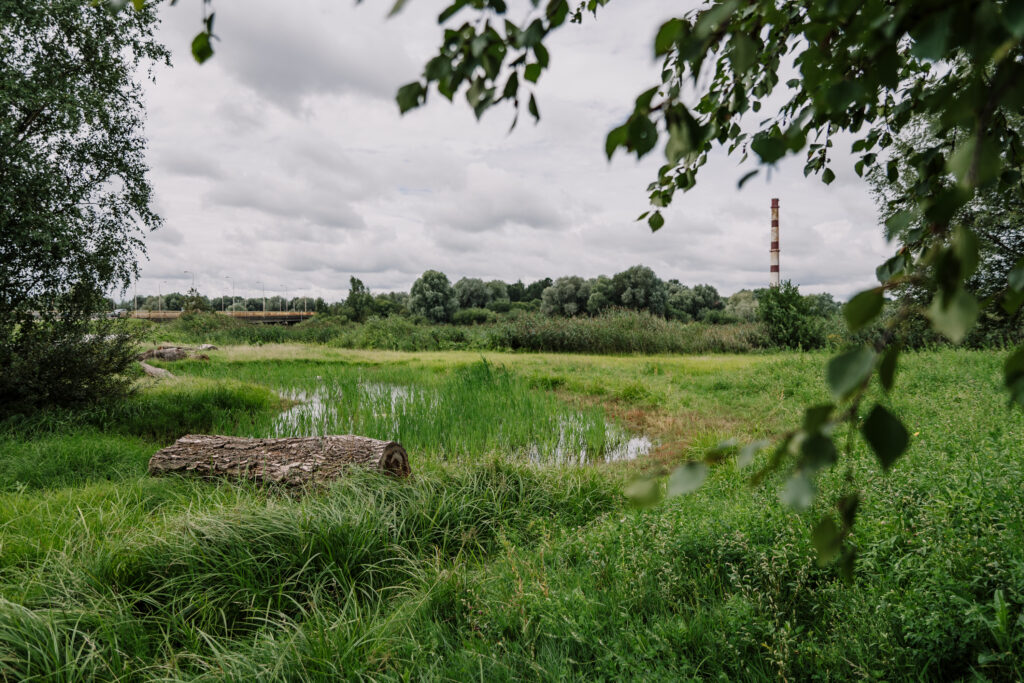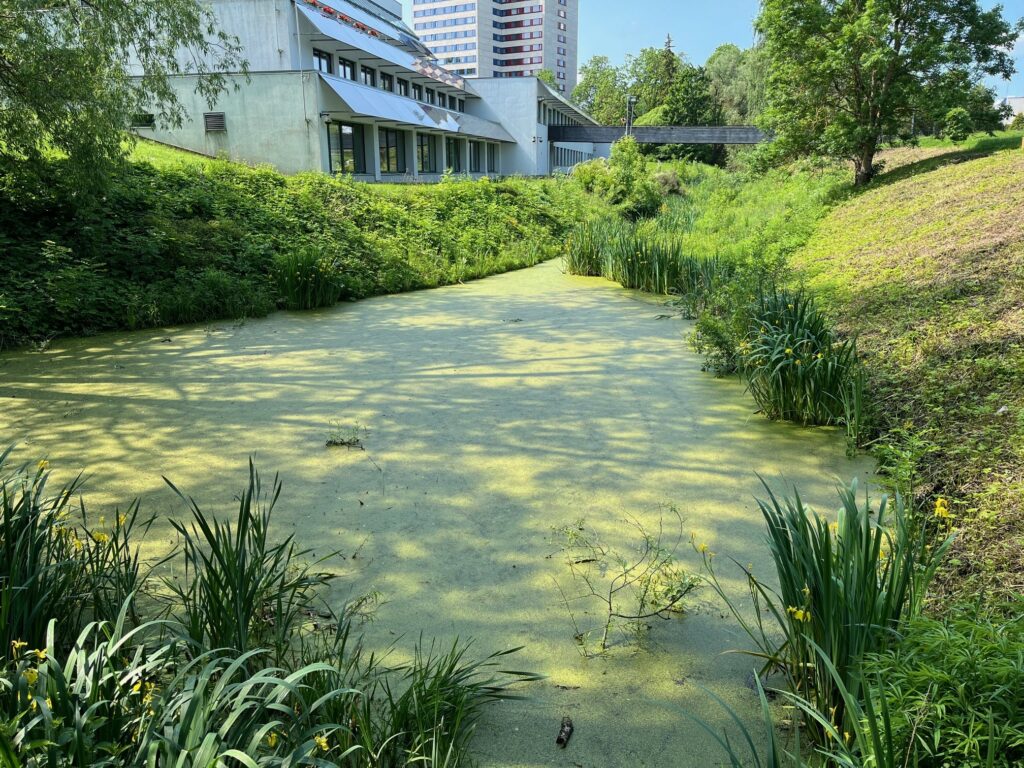This article is part of a series of publications in which stormwater experts from different cities share their cities’ journey in nature-based solutions for stormwater management. The City Blues project has come up with a transition scale which is used as a guideline to help cities describe and measure their progress in implementing nature-based solutions. The scale and descriptions of its stages can be found on the City Blues webpage: D1.3 Critical KPIs for the joint operational model design process.
How did the city become interested in nature-based solutions?
The first nature-based solutions in Tartu, Estonia, were implemented in the Soviet era. At that time the rainwater was not directed into underground pipes but managed through open ditches along the streets. Some of these ditches are still in use today, although they are limited to areas where street space allows. More modern and purposefully designed nature-based solutions were built around ten years ago, for example during the construction of a roundabout on the city border. In that project, rainwater was guided through planted areas that help clean it naturally. While we consider these solutions now in new developments, they are not yet implemented systematically across all planning processes.
What are the main benefits of nature-based solutions in the city?
They help reduce the urban heat island effect by keeping moisture in the ground and through the presence of water bodies like ponds. They also improve the quality of public spaces. For example, after several days of rain, a kindergarten playground was flooded, and children enjoyed playing in the water. So NBS could be designed to be both functional and playful. However, balance is important. In some parts of the city, excessive moisture has made it difficult for residents to grow plants, which shows the need for careful planning. One benefit is to help manage heavy rainfall when drainage systems are overwhelmed, and they support biodiversity by creating green and blue corridors where nature and people can coexist.
On what transition stage would you rate the work of the city?
Tartu could be classified being in the “drained city” stage. Nature-based solutions are included in strategic documents such as the energy and climate plan, and they are considered in planning processes. We also began the process of building a separate sewerage system for rainwater and wastewater some 20-25 years ago, and we are continuing the work. However, there are still struggles with resources and competing priorities, which makes implementation uneven. Political support and large-scale integration could also be improved, so the city is still working toward becoming more water-sensitive.
What are the main challenges for nature-based solutions?
A key challenge in Tartu is the quality of building projects. Many lack proper stormwater planning, and vertical planning – how plots are shaped to manage water – is often missing. There are only a few companies working in this field, and they tend to work alone with limited collaboration. Low project budgets affect both expertise and responsibility, and architects or engineers do not always feel accountable for solving rainwater issues. There is also a shortage of specialists with the right knowledge, which may stem from gaps in education.
Another issue is the lack of coordination and strategic planning across catchment areas. Detailed plans are made without a clear understanding of how they fit into the wider water management system. Getting a sufficient funding is challenging, especially on public land, since we do not have a stormwater fee. NBS maintenance is costly, too, and maintenance responsibilities are unclear. Utilities are not equipped to maintain green infrastructure, and city departments often work separately, which limits cooperation. These structural challenges make it harder to plan, fund, and maintain nature-based solutions consistently.
How do you engage stakeholders in nature-based solutions work?
We are building a better engagement and communication with the planning and building companies. We see that planning NBS is the responsibility of the people that make detailed plans, and they must discuss it over with the landowner and find the solution. However, meaningful engagement with landowners and planners is still limited. There is a need for more collaboration and shared interest. Ideally, before a detailed plan is made, the catchment area should be reviewed together to understand what works well and what does not. This would allow for more informed decisions and better integration of nature-based solutions.
What are some aspects that could be further developed?
One key area for development is larger-scale planning, since we do not do that yet. Catchment areas have been defined, but there is still uncertainty about how to use them effectively. A new risk assessment method is being developed to help map the places where water can be stored or redirected to reduce flood risks. There is also a need for better coordination between departments and more resources to support implementation. Creating examples and pilot projects could help demonstrate the value of these solutions and encourage wider adoption.
What advice would you give to other cities?
Exchange of experience between cities is very helpful. Site visits can help show what has been done and provide inspiration. It is important to understand whether solutions are part of a broader strategy, or just isolated examples funded by external projects. Nature-based solutions are still new and challenging, so the approach should be to learn, try, and take risks. What brought us here, might not take us further from this point.


